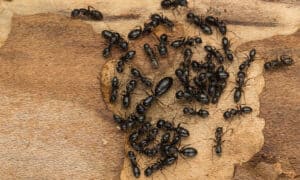There are 15 types of ants in Illinois, including a particularly invasive one that’s difficult to get rid of in the home—the pharaoh ant. That’s not to say that another species of ant or two is never found in Illinois, only that the 15 on our list are the most well-known and recognized ant species in the state.
Ants, like most insects and arachnids, are mainly interested in three things—food, water, and shelter. Some ants prefer to build their mounds in the yard, wrecking your well-manicured lawn if you’re not on top of the problem before it becomes one.
Others prefer to take up residence inside homes, mainly if all three of the primary needs are located and met within. Ants aren’t particularly picky creatures. If there is a water leak in your laundry room or nearby and accessible food in the pantry, you might just be the victim of a full-blown invasion.
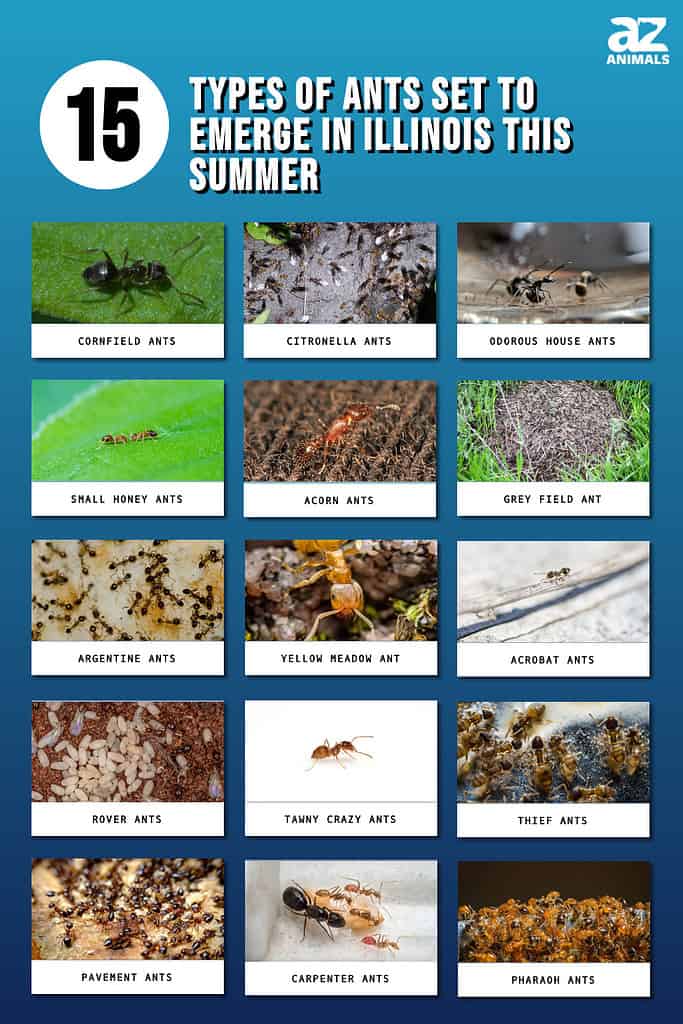
Types of Ants Emerging in Illinois
Most ants hibernate throughout the winter months, emerging in the late spring and truly thriving in the sweltering months of summer. While many of them have a preference for invading the home, the ants that construct their intricate maze-mounds in your backyard are nearly as frustrating, especially if you have pets or small children.
Some of them have similarities shared with others, but fortunately, most of them are identifiable if you know what to look for. Just be sure to keep your dried goods sealed up tight and make sure your plumbing is in order and you won’t have to observe any of these from inside your home.
1. Cornfield Ants
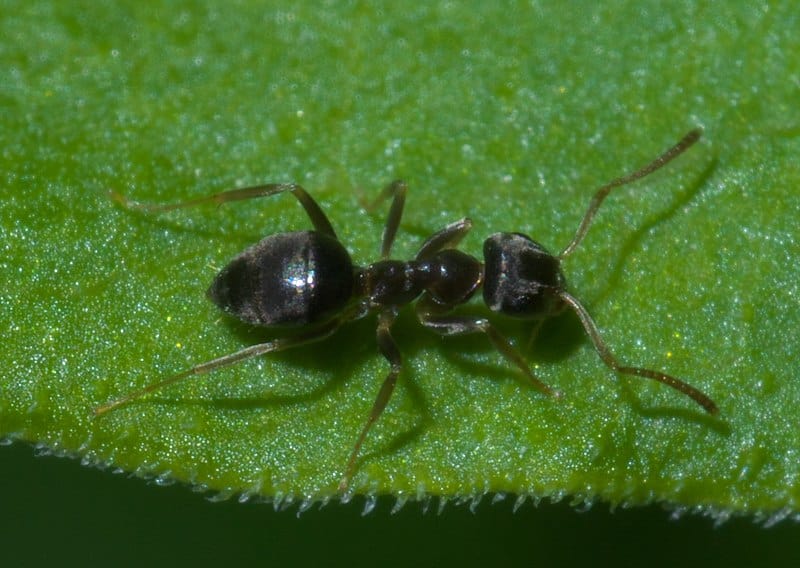
Cornfield ants in
Illinois
aren’t as invasive and aggravating as some of the other ants.
Cornfield ants run the gamut in terms of size and color variations. They are anywhere from 2.5mm in length to 9mm in length. The worker cornfield ants are typically the smallest, between 2.5mm and 4mm. Male cornfield ants are 3mm to 5mm, while the queen cornfield ant grows as long as 9mm.
Cornfield ants in Illinois aren’t as invasive and aggravating as some of the other ants. This is mainly because they live off the carcasses of other insects, nectar, seeds, and honeydew aphids leave behind. Cornfield ants come in a variety of colors, including light and dark browns, varying darker shades of gray, and reddish brown as well.
2. Citronella Ants
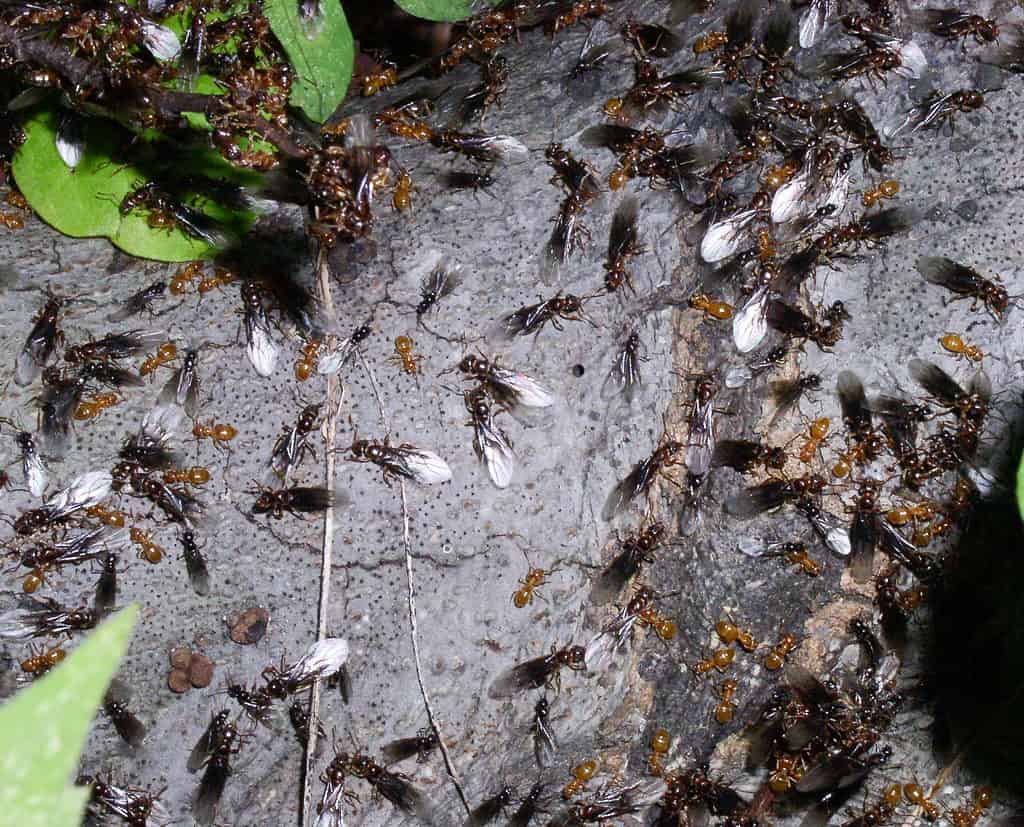
Like most ants, citronella ants prefer to nest in the soil.
Interesting name for an ant, especially since citronella uses typically drives insects away. It gets its name from the distinctive citronella smell that comes from dead or crushed citronella ants. None of the other ants in Illinois give off the same kind of smell.
Worker citronella ants are about 4mm in length and have a light yellow to dark amber color. The queens are double that length with males somewhere in between both. Like most ants, citronella ants prefer to nest in the soil, especially underneath dead logs, rocks, or other large objects sitting on the ground outside.
3. Odorous House Ants

Odorous house ants
are precisely what they sound, um, smell like.
©Dhe Tong/Shutterstock.com
It’s only fitting to go from an ant that smells like citronella when it dies to one that reeks. Odorous house ants are precisely what they sound, um, smell like. They are usually dark brown but some are also black. They also really smell bad when they die, especially if you kill a bunch at the same time.
About 3mm in length, odorous house ants in Illinois are no different than they are anywhere else. They adore the wooden furniture, decks, doors, floors, and frames in your home and will happily nest there. They’ll exit their homes in droves, searching throughout your residence for water and food.
4. Small Honey Ants
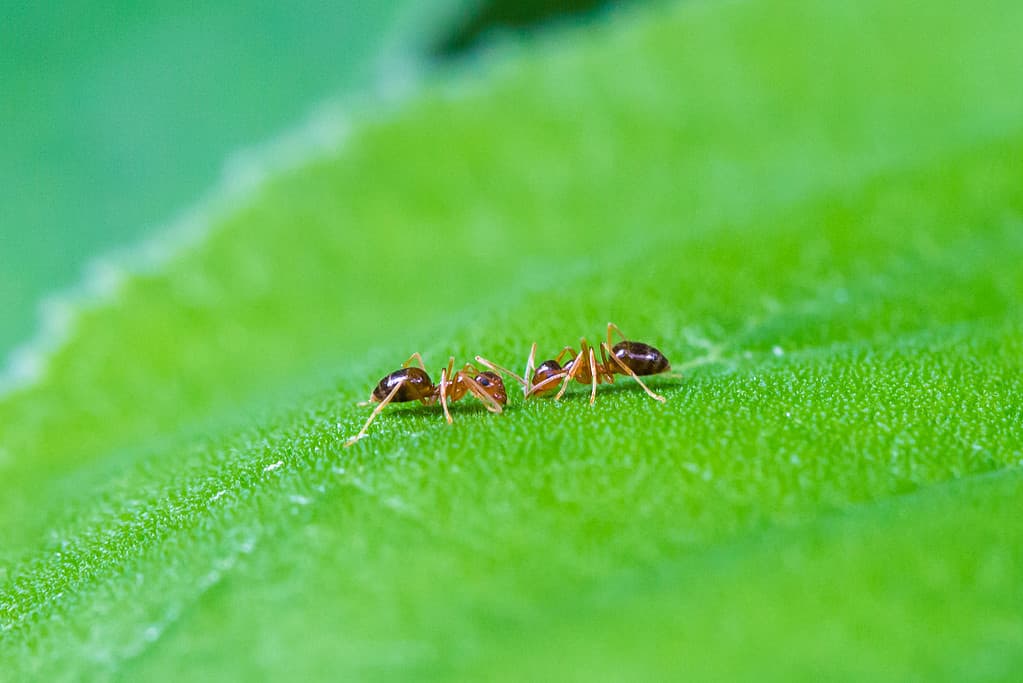
Also known as the winter ant and the false honey ant, small honey ants are the exception to the spring and summer emergence rule—hence the secondary name, winter and. Dark brown and black, most small honey ants are about 3mm in length, with a queen that’s about double the size.
They make their way into homes in one of two ways. Small honey ants either invade from an existing, exterior home or take up residence within your home, building their nest indoors. These ants especially love invading potted plants, like the ones people often keep indoors. They have a strong attraction to anything sugary and sweet.
5. Acorn Ants
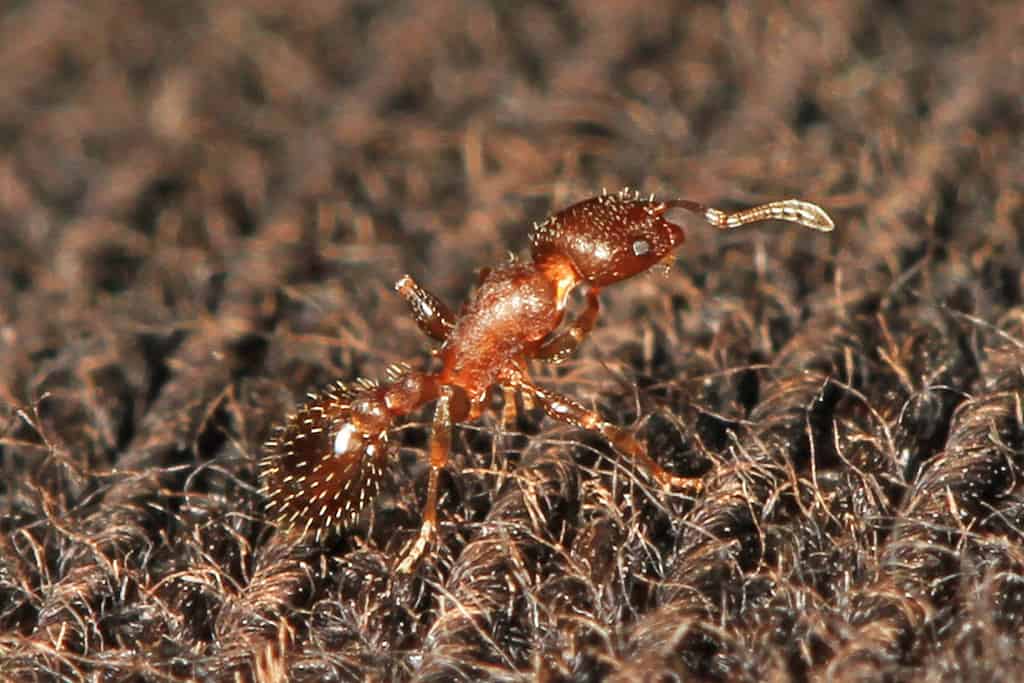
The acorn is typically the color of dark amber, almost translucent. As their name implies, they like to live within the confines of an acorn, with their “hive” potentially inhabiting multiple acorns within a specific area of the yard. It especially works out if there are multiple acorns in a pile or very close to one another.
Without acorns, these ants are more than happy to make their homes in pine cones, underneath rocks, inside discarded insect exoskeletons, and in the stems from dead plants. They’ll immediately abandon their home if disturbed, only to inhabit another one quickly.
6. Grey Field Ant
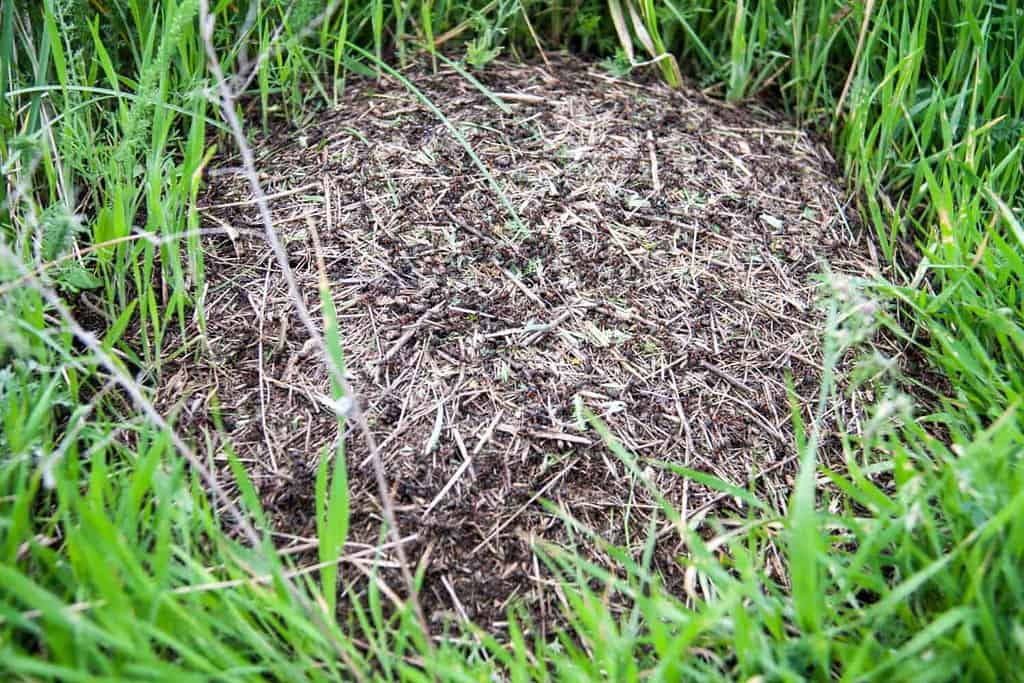
Grey field ants are anywhere between 4mm and 9mm in length and are, as their name implies, a variety of grey shades, sometimes as dark as black. They also tend to build massive mounds, three or four feet in diameter and a couple of feet tall.
They destroy crops or garden plants because they don’t like the shade. Grey field ants kill them by attacking their base, injecting the roots and lower stem with folic acid, crippling the plant’s ability to draw water and nourishment from the ground. Even worse, they have a nasty, painful bite that’s far worse than one from a fire ant.
7. Argentine Ants

Argentine ants also drive off pollinators and other insects that you want in your garden.
©Victor Suarez Naranjo/Shutterstock.com
If you come across these ants in Illinois, they are far from home and certainly not native. The Argentine ant is an invasive species, brought north from Argentina. These ants are typically dark brown, with a shiny exterior. They also cause a lot of problems.
They spread rapidly, reproducing at a staggering rate, and they also build huge, often invasive mounds. Argentine ants also drive off pollinators and other insects that you want in your garden, all while destroying your potted plants and the underlying foundations of brick and concrete structures.
8. Yellow Meadow Ant
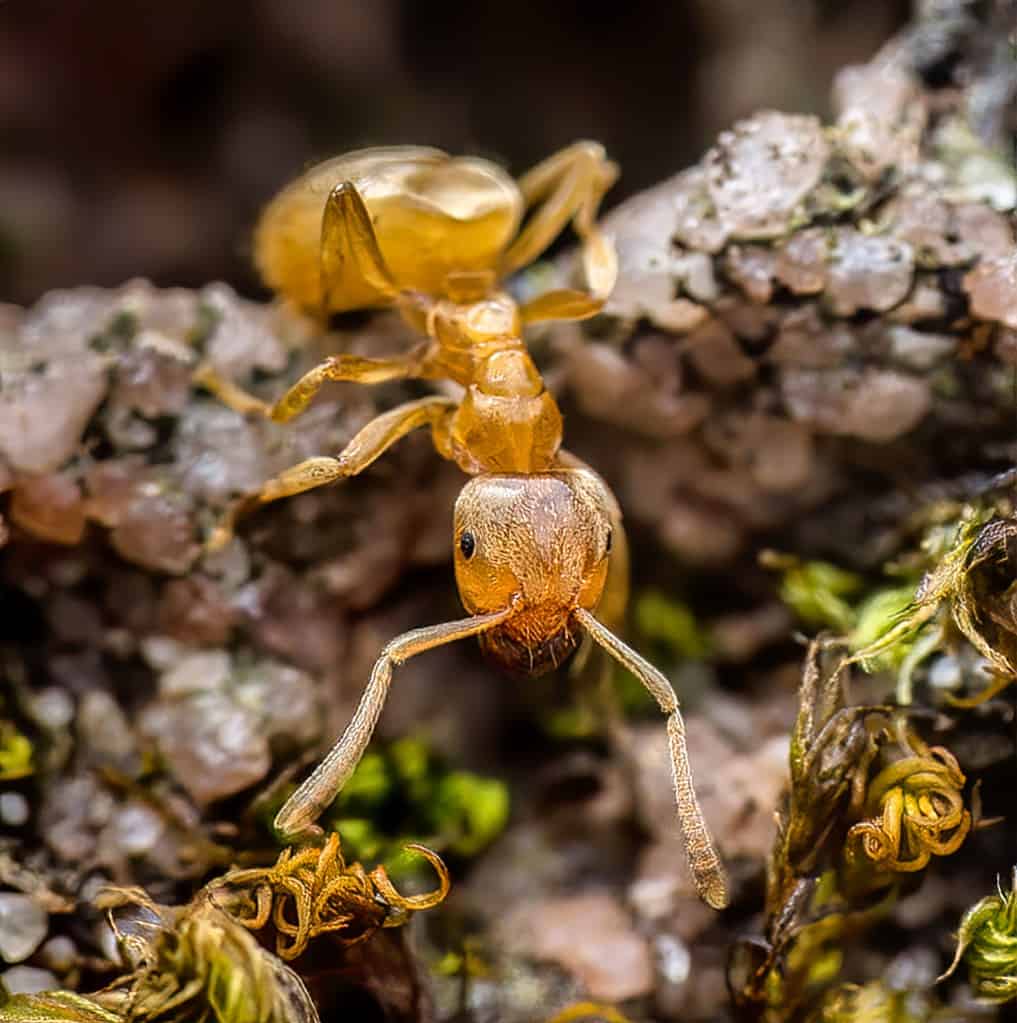
Yellow meadow ants usually won’t build a mound on grass that is routinely mowed.
©iStock.com/Wirestock
The yellow meadow ant is as yellow as its name suggests. They build the typical-size ant beds that most people are familiar with, except the depth of a yellow meadow ant bed is often over a yard. The workers stay underground and, unless you kick the nest over, rarely come out for anyone to see.
All of the adult reproducers, male and female, have wings. Once the male and female mate, many of the females will fly away and start a whole new colony. Sometimes, she may only fly a few yards away and start building a second mound in the same yard. Yellow meadow ants usually won’t build a mound on grass that is routinely mowed.
9. Acrobat Ants
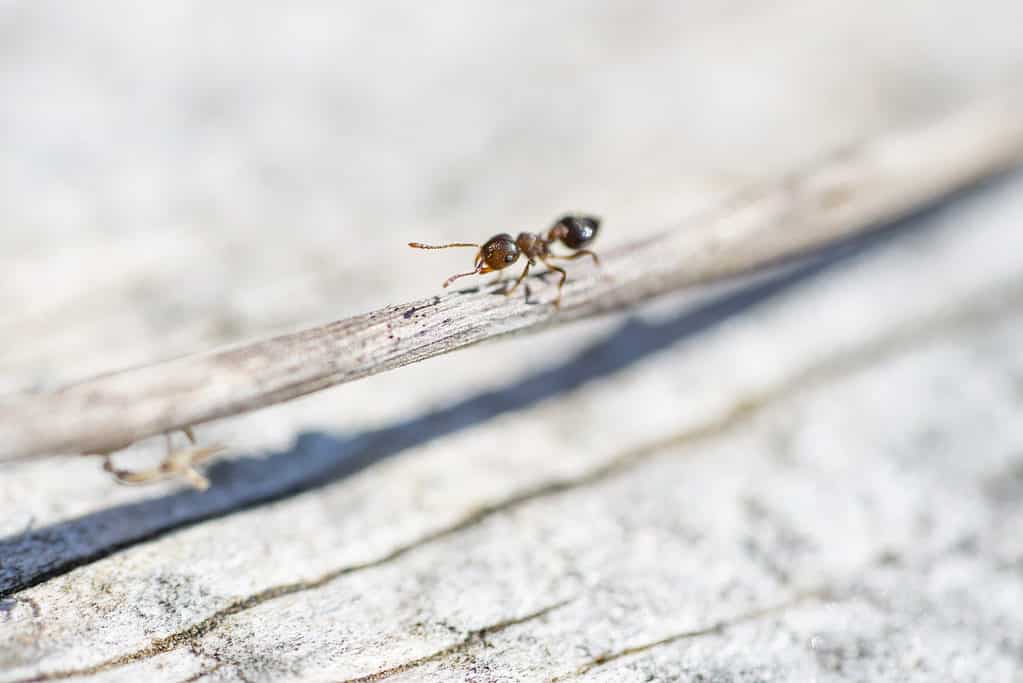
In search of water, they often find their way into cracks in piping.
©iStock.com/ErikAgar
Acrobat ants are often dark brown, with a black abdomen, and grow to about 3.5mm in length. They get their name for their ability to curl their abdomens up and over their heads, like the tail of a scorpion. They aren’t as invasive as some of the other species on this list but they can be, if allowed a solid foothold on your lawn.
Acrobat ants tend to gravitate towards wood chips or piles of dead leaves and are most often spotted forming long lines around the base of a brick home or a concrete patio. In search of water, they often find their way into cracks in piping or drainage pipes coming out of the walls of residences and businesses.
10. Rover Ants
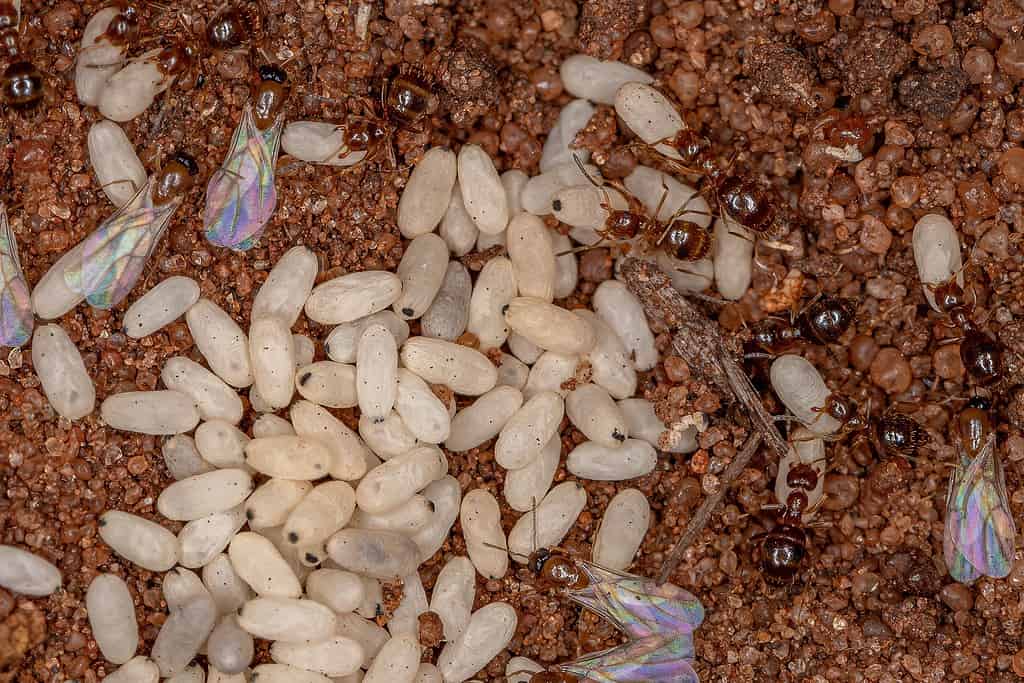
Rover ants have workers that stay out of sight, with winged male and female reproducers.
©Vinicius R. Souza/Shutterstock.com
Rover ants are usually glossy black, with barely discernible brown lines across the width of their abdomens. They’re tiny ants, only about 1.5mm in length, and have 9 segments in each of their antennae. They are rarely thought of as pests or nuisance ants in Illinois and are far more prevalent in southern states.
Rover ants also don’t bite or sting, which certainly helps their reputation. They will occasionally find their way into homes, however, though they are nowhere near as bad as some of the other ants on this list. Rover ants have workers that stay out of sight, with winged male and female reproducers.
11. Tawny Crazy Ants
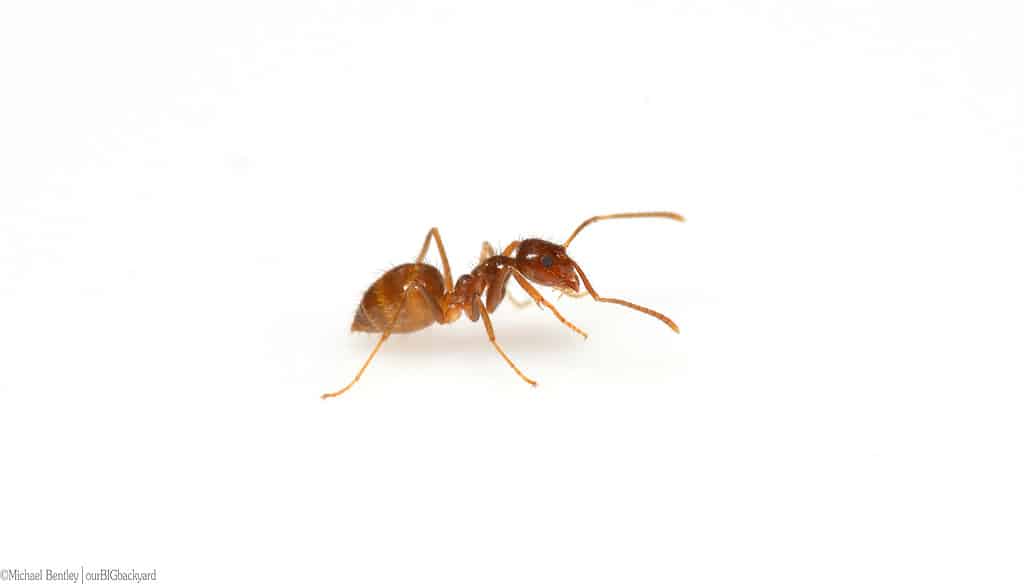
Once they are in your yard, they spread fast and are capable of taking over the entire yard quickly.
Also known as raspberry crazy ants, tawny crazy ants are relative newcomers to the United States, only discovered in North America in 2002. They are thought of as an invasive species, so it wasn’t a welcome discovery either. Tawny crazy ants are about 3mm in length and tend to be light brown, with yellowish bars running across the width of their abdomens.
They have a preference for building their homes beneath debris in the yard, both natural and synthetic. Whether it’s a giant log, rock, or trash container waiting for the garbage pickup, tawny crazy ants will seek it out. Once they are in your yard, they spread fast and are capable of taking over the entire yard quickly. Like most ants, they begin building in the spring and are most active in the summer.
12. Thief Ants

What do they steal? Well, everything. They take up residence right next door, often building their nests into the existing nest.
©Mathisa/Shutterstock.com
Thief ants are unique in that they steal from other ants. What do they steal? Well, everything. They take up residence right next door, often building their nests into the existing nest. Then they pool together their resources and workers to start removing resources gathered by the victim ants.
While they don’t build colonies and reproduce as abundantly as some other ants, they are still problematic. These yellow, bronze, and dark brown ants begin in the late spring and send out their fertile females in the middle of the summer. She will relocate and start a new colony, which will bloom in the following spring.
13. Pavement Ants

While their mounds are active and the temperature is dropping, they may find a way into a home if it’s close enough to them.
©Ezume Images/Shutterstock.com
You’ve probably seen their little mounds popping up in cracks along the sidewalk. Pavement ants are small, usually red/brown, and love human food, especially if it’s extra greasy or sweet. These ants show up late in the spring and are at their most active throughout the summer.
However, they don’t always go away in the winter. While their mounds are active and the temperature is dropping, they may find a way into a home if it’s close enough to them. Once the new place is determined, they will migrate there before it gets too cold for them to remain active.
14. Carpenter Ants
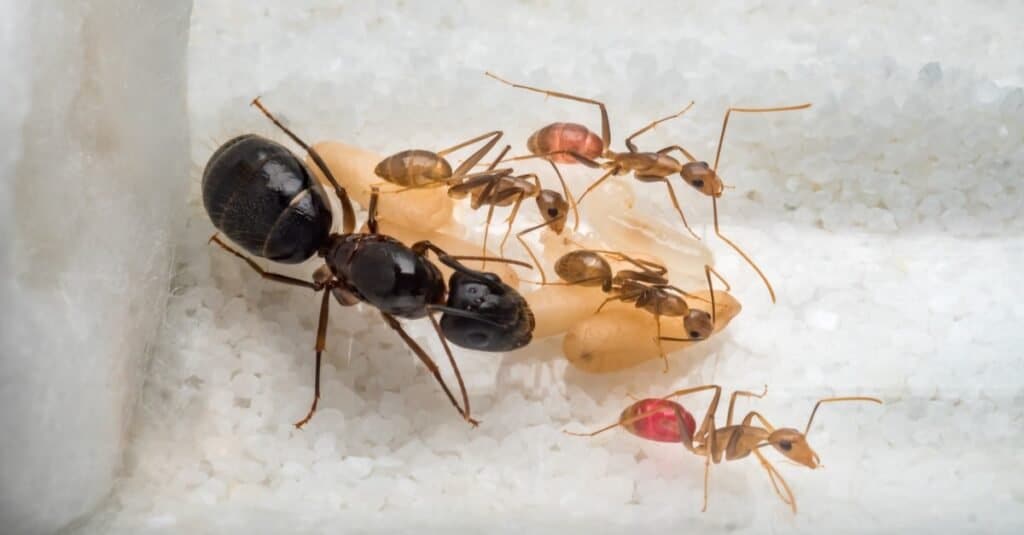
They burrow into walls and can cause a lot of damage when excavating a new home.
©Poravute Siriphiroon/Shutterstock.com
Carpenter ants are rather large, often reaching nearly 13mm in length. Their legs are usually yellow, in sharp contrast to their dark brown or black bodies. For the most part, they eat protein and sugar, which probably makes almost everything in your pantry a potential target.
They are most active in the late spring and summer months and live a fairly nocturnal lifestyle. They come out at night to raid your pantry, assuming they have set up residence inside your walls and you have loose food in there. They burrow into walls and can cause a lot of damage when excavating a new home.
15. Pharaoh Ants
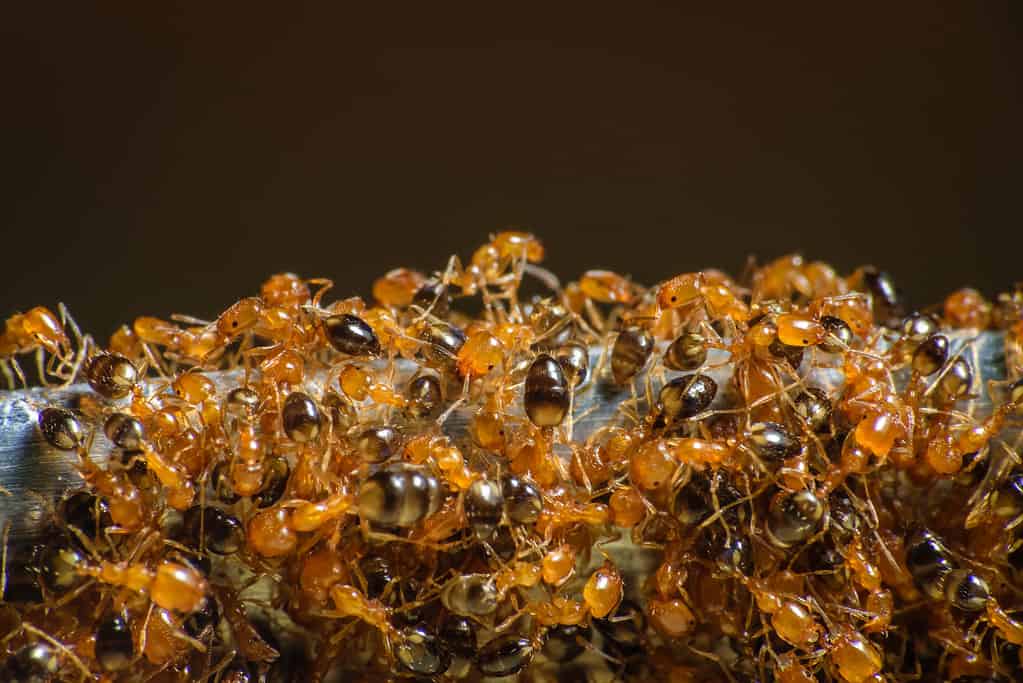
Once they invade a home (and they don’t prefer to nest outdoors, ever), they are very hard to get rid of.
©Suman_Ghosh/Shutterstock.com
Pharaoh ants are one of the most common ants in Illinois. They are spread out across the state and prevalent in almost every corner of the state. Residents of Illinois will be the first to tell you what an annoyance pharaoh ants can be.
They are usually a pale yellow or pale red in color and very tiny in size (2mm at the longest). Once they invade a home (and they don’t prefer to nest outdoors, ever), they are very hard to get rid of. They also tend to spread salmonella. Like most ants, they are prevalent in the spring and summer, with higher activity during the latter.
Final Thoughts
These are the fifteen types of ants in Illinois and most of them are recognizable just because people have had to deal with the more invasive aspects of some of the species. Fortunately, not all of them are as invasive and aggressive as most.
Though Illinois is a northern state, with colder winters, ants are still prevalent there and they mostly emerge in the spring, reaching their peak in summer to early fall. During the winter, they hibernate, unless they become your lucky new roommates and set up shop in your laundry room.
Summary of 15 Types of Ants Set to Emerge in Illinois This Summer
| Ant | Size | |
|---|---|---|
| 1 | Cornfield Ants | 2.5-9mm |
| 2 | Citronella Ants | 4mm |
| 3 | Odorous House Ants | 3mm |
| 4 | Small Honey Ants | 3mm |
| 5 | Acorn Ants | 2-4mm |
| 6 | Grey Field Ant | 4-9mm |
| 7 | Argentine Ants | 2.2-2.8mm |
| 8 | Yellow Meadow Ant | 2-9mm |
| 9 | Acrobat Ants | 3.5mm |
| 10 | Rover Ants | 1.5mm |
| 11 | Tawny Crazy Ants | 3mm |
| 12 | Thief Ants | .5-3mm |
| 13 | Pavement Ants | 3mm |
| 14 | Carpenter Ants | up to 13mm |
| 15 | Pharaoh Ants | up to 2mm |
Thank you for reading! Have some feedback for us? Contact the AZ Animals editorial team.





